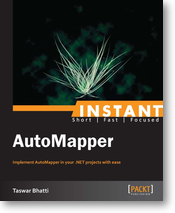MVP TechBytes – Vector Search and Azure AI Vision with Postgres. Learn about what vector similarities search is, we deep dive into cosine distance used in Vector Search, with a live demo on how to enable it in Azure using Vision Studio. 🧑💻 To learn more about vector similarity search with Azure Computer Vision Image Retrieval APIs:
🔗 https://sfoteini.github.io/blog/image…
🔗 Twitter Handle:  / savvidoufoteini
/ savvidoufoteini
🔗 Blog: https://sfoteini.github.io/
Summary
This response is based on the document:
Exploring Vector Similarities Search and Image Retrieval with Azure AI Vision
In today’s world, technology is advancing at an unprecedented pace, and one of the most exciting developments is in the field of artificial intelligence. One of the most popular topics in AI is vector similarities search, which allows us to explore the image retrieval functionality of the newest Azure computer vision service, now renamed to Azure AI Vision.
Foteini Savvidou, a Microsoft Most Valuable Professional in AI, joined MVP Tech Bytes to discuss this topic in depth. She explained how the image retrieval function is based on the conversion of images into vectors, called vector embeddings. These vectors are high dimensional dense vectors, each dimension of which contains information about the original content. By converting images into vectors, computers can easily understand the similarity between images.
Foteini also discussed the newest version of the Azure Computer Vision service, powered by the Project Florence, which is a state-of-the-art computer vision model developed by Microsoft Research. This model supports both image and natural language tasks and can be used to perform several computer vision tasks such as object detection, classification, background removal, video summarization, and frame rotator. It can also be used for image retrieval, which combines the image and natural language capabilities of the model.
Foteini demon2strated how to use the Vision Studio, the UI interface of the computer vision service, to perform image retrieval. She showed how to use text queries to search an image collection and how to adjust the threshold to show more or fewer images. She also explained how to use a reference image to search for similar images in an image collection.
Foteini also discussed the various databases available in Azure for storing vector embeddings, including Azure Cosmos DB for Postgres SQL, Azure Data Explorer, Azure Redis Database, and Azure Cognitive Search. She demonstrated how to use the vectorized image API to convert images into vectors and store them in the Azure Cosmos DB for Postgres SQL database. She also showed how to use SQL queries to perform vector similarity search.
Overall, the conversation provided a detailed and informative overview of vector similarities search and image retrieval with Azure AI Vision.



Leave A Comment